A Guide to Selling Colorful & Toned Coins
Rare, Mysterious, and Beautiful.
Have you ever discovered a coin in a collection with vibrant, rainbow-like colors? This phenomenon is called toning, and it can transform a common coin into a rare work of art. Understanding a toned coin’s value is key.
For over 30 years, American Rarities has been a leading expert and buyer of beautifully toned rare coins. While many toned coins are simply tarnished, some display spectacular colors that are highly sought after by collectors. This guide will take a deep dive into what causes toning, the specific patterns collectors pay a premium for, the dangers of artificial toning, and how our experts determine the true worth of your colorful coins.
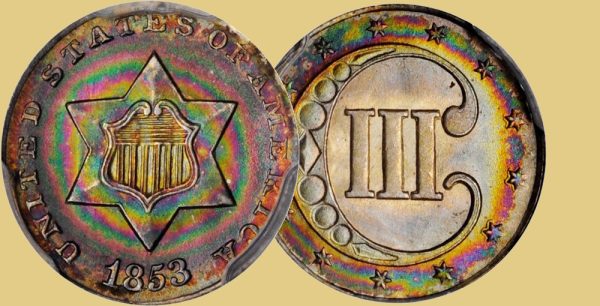
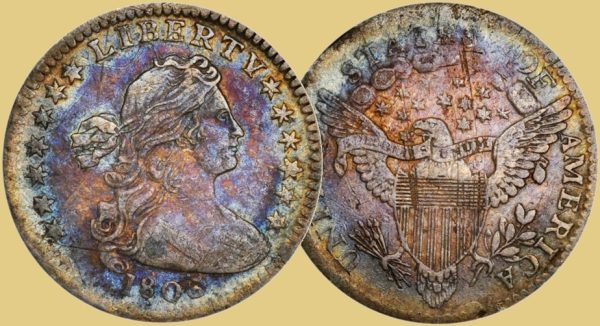
The Science of a Toned Coin: Natural Toning vs. Tarnishing
As coins age, their surfaces react with the environment. This can happen in two ways, with dramatically different effects on value.
Tarnishing (Undesirable)
Tarnish occurs when a coin’s metal, usually silver, reacts with oxygen. This process forms a layer of silver-oxide, which typically appears as a dull, dark, or hazy gray coating on the coin. Over time, heavy tarnish can degrade the coin’s surface and will almost always lower its value.
Toning (Desirable)
Toning is a different, less common chemical reaction that crates color. The coin’s silver reacts with the sulfur to form a thin, stable film of silver-sulfide. It occurs when a coin’s surface, usually silver, has a slow, decades-long interaction with trace amounts of sulfur in its storage environment. This was common for coins left undisturbed in old canvas mint bags, coin albums with paper sliders (like Wayte Raymond albums), or certain types of paper envelopes.
This film acts like a prism, refracting light and creating the spectacular rainbow and pastel colors that collectors prize. We are especially interested in purchasing “Monster Toned Coins” that display incredible color, usually found on coins in higher, uncirculated grades.
To see stunning examples and get an authoritative explanation of the physics involved, check out our guide to Monster Toned Morgan Silver Dollars.
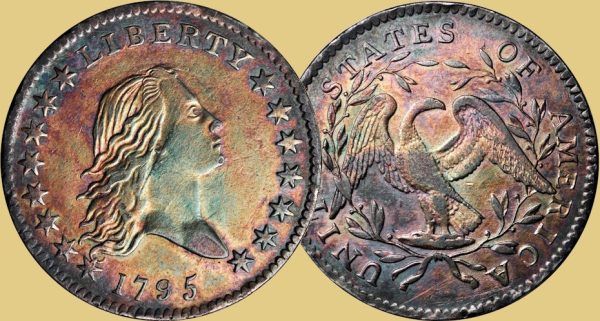
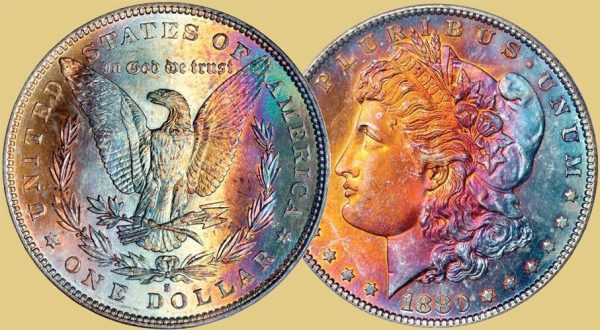
What Determines a Toned Coin’s Value?
The value of a beautifully toned coin is highly subjective and requires an expert eye. Our specialists evaluate several key factors:
Color & Eye Appeal: Are the colors vibrant and attractive? Blues, greens, and deep purples are often the most desirable. Does the color pattern complement the coin’s design?
Vibrant, Original Color: The most valuable toning is often described as “monster rainbow” or “electric.” The colors are vivid and jump off the coin’s surface.
Attractive Patterns: Toning is rarely uniform. Collectors often pay a premium for specific, attractive patterns:
“Crescent” Toning: A crescent-shaped rainbow pattern, often formed where another coin was resting against it in a mint bag.
“Bullseye” Toning: Colors that radiate out from the center of the coin in concentric circles.
“Peripheral” Toning: A ring of color around the rim of the coin, often framing the central design.
Underlying Luster: The most valuable toned coins have brilliant, mint luster shining through the colors. This proves the coin was in pristine condition before it began to tone.
The Coin Itself: The underlying coin’s condition (grade), rarity, and popularity are crucial. A beautifully toned common-date Morgan silver dollar is valuable; a beautifully toned key-date Morgan dollar in a high grade can be worth a fortune.
The Danger: How to Spot Artificial Toning
Because natural toning is so valuable, many people try to fake it. Artificial toning, created rapidly with chemicals, heat, or other artificial processes, is considered damage and is worthless to serious collectors.
Our experts can easily spot the signs of artificial toning, which often include:
Unusually bright, “greasy” looking colors.
Colors that do not follow the natural progression (e.g., deep purple without underlying shades of gold and red).
Color that is uniform and “painted on,” lacking natural breaks or patterns.
Why Sell Your Colorfully Toned Coins to American Rarities?
1. A Strong Market for Toned Coins
Toned coins appeal to a growing base of collectors who appreciate their rarity and beauty. At American Rarities, we cater to this specialized demand, ensuring you receive a premium offer for your collection. Check out our home page for more info on the types of coins we appraise.
2. Fair and Transparent Pricing
Our offers are based on true market demand and the coin’s individual appeal. Factors we consider include:
- The intensity and evenness of the toning.
- The coin’s grade, rarity, and condition.
- Current auction and market trends.
3. Expertise You Can Trust
With over 30 years in the rare coin business, our team has the expertise to evaluate toned coins accurately. We use advanced resources such as Certified Coin Exchange, market databases like the GRAYSHEET, and auction results to ensure fair pricing.
Get a Free, Expert Appraisal for Your Toned Coins
Don’t guess about your toned coin’s value. Let our experts determine if the toning is natural and how much it adds to the coin’s worth. Our appraisal process is free, confidential, and comes with no obligation to sell.
When you google “Monster Toned Coins”, “Toned Coins”, “Colorful Coins”, you want to find a coin dealer like us. Even coins with modest color can command strong premiums. No one will make you a stronger offer for your toned coins. Get a hassle free appraisal and offer today!
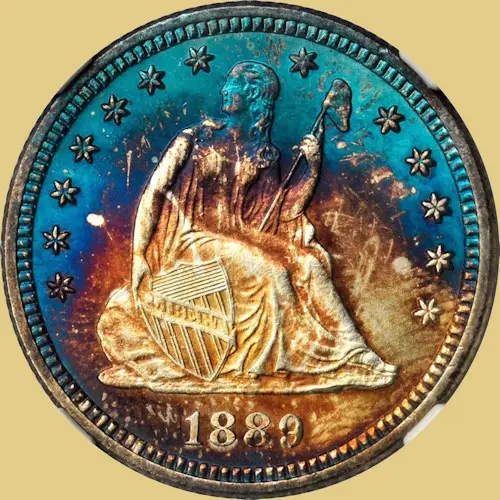
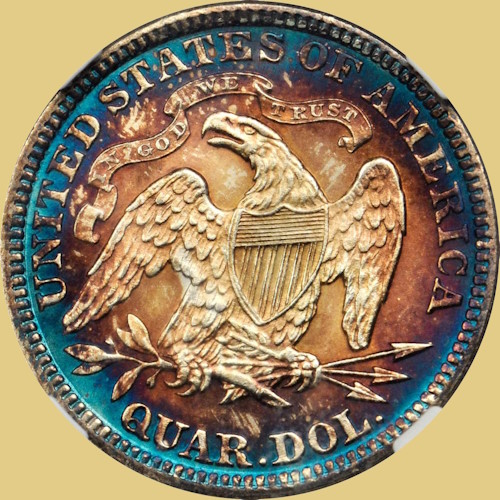
Toned Coins and Colorful Coins
Email, Text, or Use This Form To Send Us Your Inventory List or Pictures
Email: staff@americanrarities.com | Phone: 800-622-5680 | Text: 720-600-4740
Professional Associations

